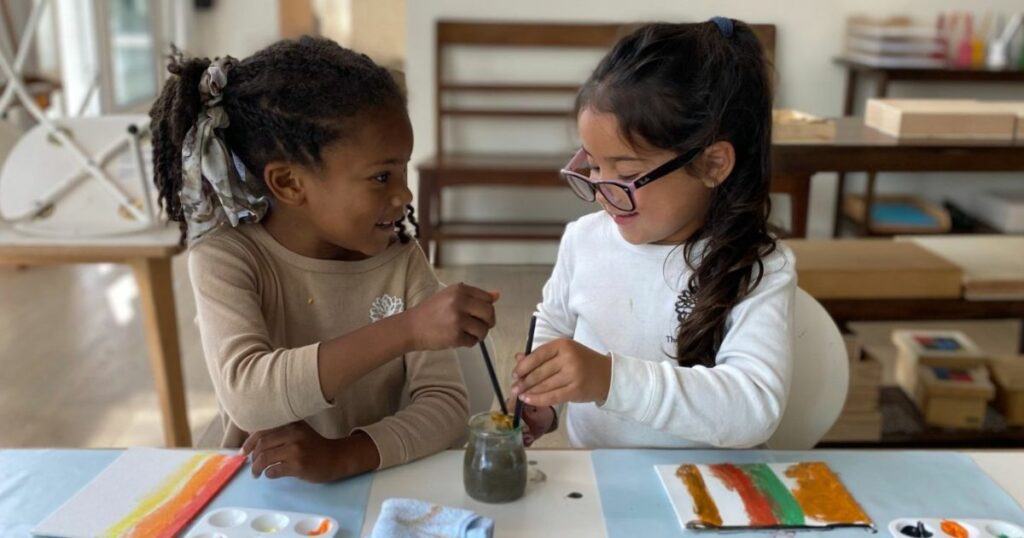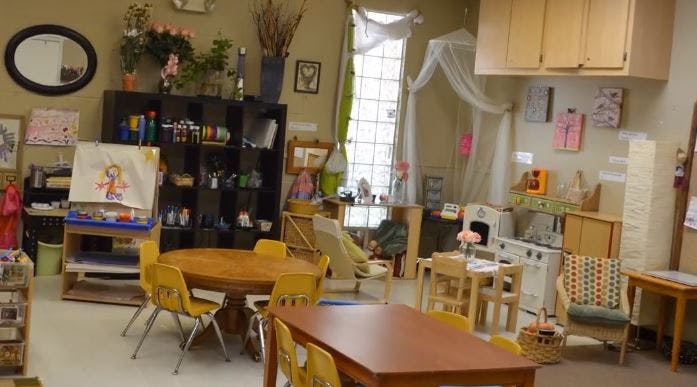Why is Empathy Important?
Empathy is essential for a harmonious society. It enables ethical decision-making, charitable deeds, and altruism. Early childhood lack of empathy for other people’s emotions is linked to mental health concerns later in life, such as conduct disorder and psychopathy.

Understanding other people’s sentiments encourage social engagement and empathy. It’s crucial for internalizing rules and aiding others, even if it’s at one’s own expense.
How to Teach Children Empathy?
There is an importance of empathy in child development. But now the question comes how to develop empathy in kids? Check out the below-mentioned points to teach children empathy:
#1 Emotional Attunement:
One of the most effective ways to teach empathy to children is to demonstrate empathy through your actions. By mirroring your child’s behavior consciously and appropriately- emotional attunement allows you to sympathize with and comprehend your child’s feelings. Mimicking your child’s actions triggers the shared neurological processes that underpin action and emotion in your child.
Exaggerated and somewhat imitative facial expressions, body language, and nonverbal cues that match the child’s emotional state can all be used to convey emotional attunement. When your child is upset and sobbing, you can say, “Oh, poor baby,” while making modest distressing facial expressions and using a voice tone.
#2 Be Warm, Responsive, and Nurturing:
So, when do you show emotional sensitivity?
Become a kind, nurturing, and responsive parent. Being a responsive parent entails being aware of your child’s positive and negative emotions to address their emotional needs.
Early experiences with a primary caregiver are crucial for the development of empathy. Secure attachment is promoted by parents who are loving, nurturing, and responsive to their children’s emotional needs.
Because their parents have shown worry for them, securely bonded children have more empathic concerns for others. Because their responsive parents have taken on their perspective, these youngsters are better at comprehending others’ points of view.
Positive discipline and inductive discipline assist parents to stay positive and empathic when disciplining their children.
#3 Model how to value feelings
Whenever possible show warmth and empathy to your kids, it is going to be quite helpful when you want to teach empathy to kids. Children are known to be influenced by the behaviors they see around them and are monitoring others to learn suitable methods of behaving and interacting. You can be a good role model by acknowledging and valuing the sentiments of others, as well as demonstrating compassion and sympathy when someone is unhappy, disturbed, distressed, frustrated, or in need of assistance.
Recognize how kids feel when they exhibit unpleasant emotions. Provide nurturing until they indicate that they are ready to go on. Children may require assistance in understanding their emotions, therefore label the emotion for them. If they are crying, say something like, “You seem upset. “How can I help?”
#4 Connect thoughts, feelings, and behavior
When discussing feelings with children, connect behaviors to feelings so that they grasp cause and effect. Teaching children about cause and effect can also be accomplished through stories, role-playing, or reading books. Discuss the characters’ ideas, feelings, and behaviors with your children. What are the characters likely to do next?
Connect these scenarios to the child’s own life. For example, if the character is unhappy because she misses her parents, connect that feeling to a period when the child was upset for a similar reason. This allows the child to better comprehend the relationship between feelings, thoughts, and behaviors.
For older children (five and up), ask them to put themselves in the shoes of another kid or adult: “How do you think they are feeling?” Why would they be upset? “What can we do to assist?”
#5 Build an environment of empathy
If your child or a child in your school is challenging with empathy, try to set them up for success by providing opportunities for them to be empathic and emphasizing how being nice may benefit everyone involved:
“It was incredibly thoughtful of you to assist your sister when she misplaced her favorite toy.” I’m sure she’ll remember that and want to assist you in the future!”
This will encourage more of the same behavior in the future.

Children with strong empathy abilities are more likely to succeed in adulthood. Parents, teachers, caretakers, and even siblings can all play an important part in assisting one another in achieving success.
Takeaway:
Empathy is a skill that may be developed. Empathic siblings and adult caregivers can both nurture and cultivate it. However, empathy takes time to develop. Following the tips in this article can help parents, teachers, and caretakers to develop empathy in kids. Also, adhering to the various Montessori Principles could be quite helpful.






